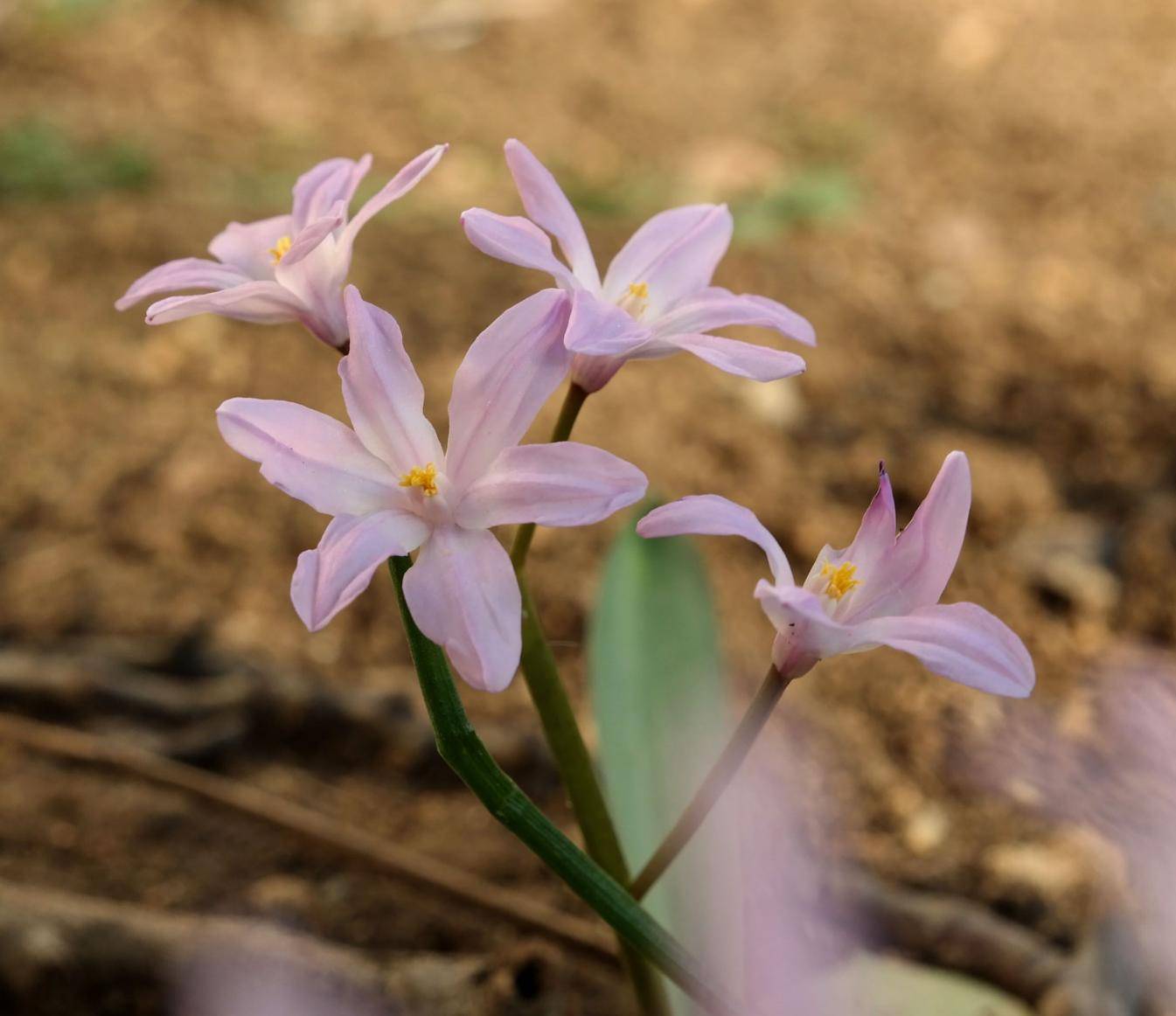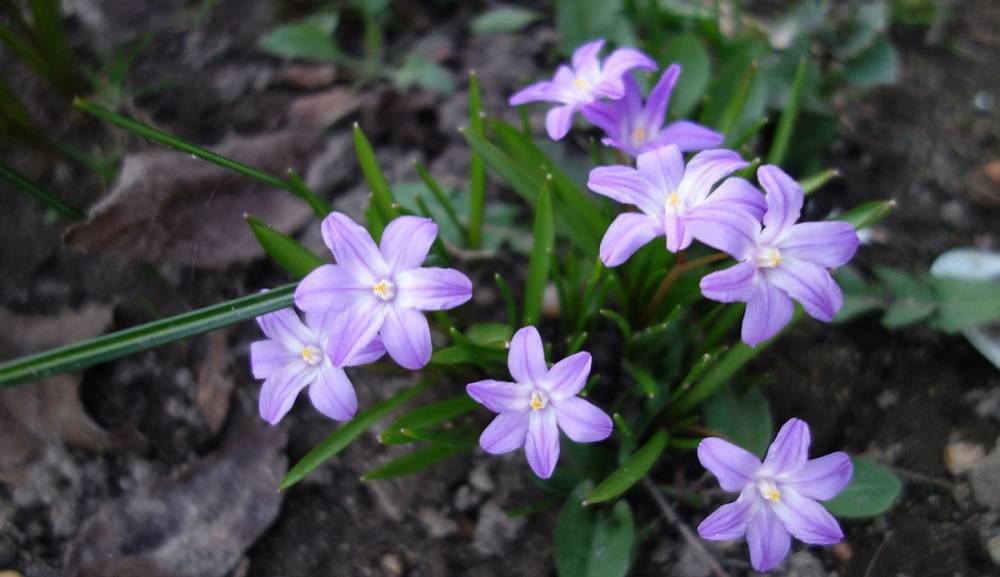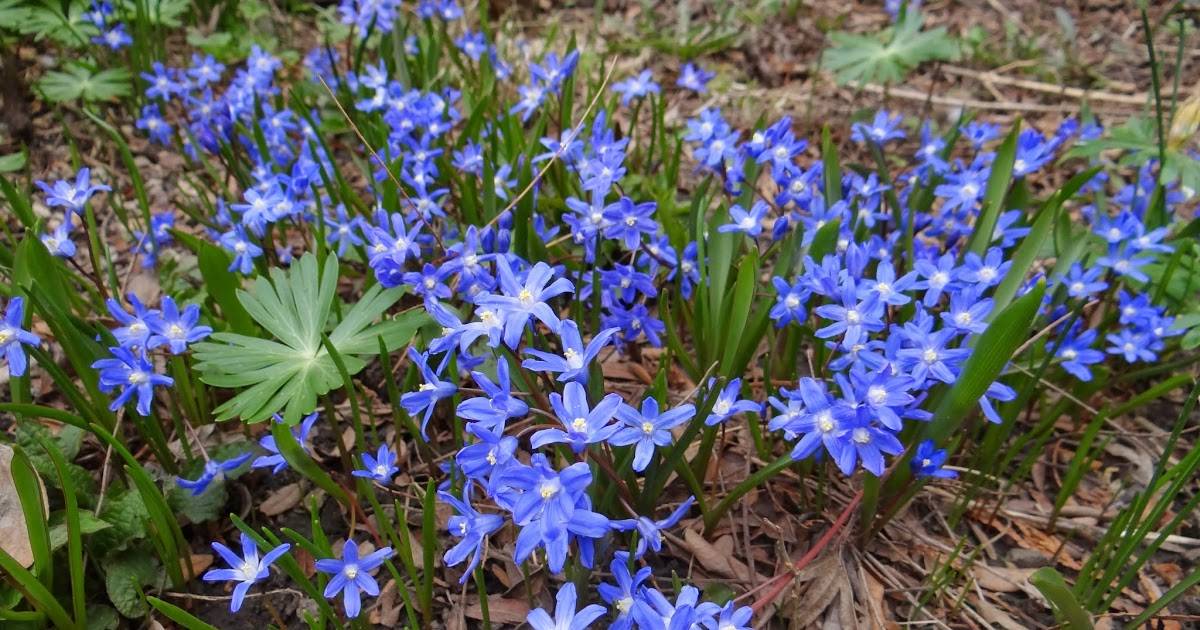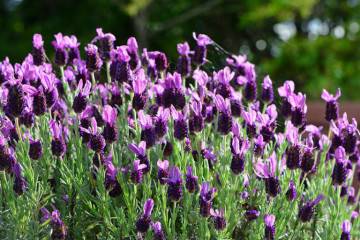Chionodoxa planting and care in the open field
Content:
A low-growing perennial from the lily family called Chionodoxa is a frequent visitor to the gardens. It belongs to a large group of snowdrops, since the flowers bloom in the spring, when the snow has not yet melted to the end.
What chionodox look like
A perennial bulbous plant looks very decorative, its corollas can be painted in violet-blue, blue, lilac and pink. Chionodoxa in translation from Greek means: glory and pride, and the people often call the flower "snow beauty" - this description suits him very well.
What family does it belong to
The plant belongs to the genus Scilla, the Asparagaceae family. In total, the species (Scilla luciliae) includes 6 representatives.
Briefly about the history of appearance
The name of the species was given in honor of the wife of Lucill (Lucill) of the Swiss botanist Pierre Amond Boissier in 1877. Later, all representatives of Chionodoxa became part of the genus Scilla.
Plant characteristics
Flowers reproduce mainly by ovoid bulbs of a relatively small size - up to 3 cm long and up to 17 mm in diameter. The scales on their surface are light. Each bulb lives only 2 years.
Each bulb grows only 2 leaves of a dark green color, broad-lanceolate grooved, up to 8-12 cm long and up to 2 cm wide. Peduncles are about 10 cm long, at the ends they form a brush of 2-3 buds. The bell-shaped flower can be up to 4 cm in diameter. When pollinated, capsules with black seeds inside ripen.
Types and varieties of chionodox for open ground
On sale you can find planting material for the following popular varieties of bulbous perennial.
Chionodoxa Forbes (Chionodoxa forbesii), or Chionodoxa Tmoluza (Chionodoxa tmolusi)
The flower is native to the south of Turkey. Height - up to 25 cm. Peduncles form a brush of 15 white or pink buds. It does not propagate by seeds, only by the children of the bulbs. It has been cultivated in culture since 1976.
Popular varieties:
- Alba (Chionodox giant Alba);
- Chionodoxa Blue Giant
- Pink Giant (Giant pink with pink-lilac color of the petals).
They bloom for a long time - up to 20 days.
Chionodoxa luciliae, or Chionodoxa gigantea
The natural range of the species is the mountainous area of Asia Minor. Plant up to 20 cm high with typical leaves. The inflorescence is formed by 10 buds 3 cm in diameter in full dissolution. The petals are bluish blue with a white base. It has been cultivated in the gardens since 1764.
The most popular varieties are as follows:
- Chionodox Lucilia Alba. White flower on a peduncle up to 10 cm tall. The usual corolla is 2.5 cm in diameter, and in the giant variety it is up to 4 cm. The brushes are formed by 3-4 buds.
- Chionodoxa Rosea. Pink flowers have a barely noticeable purple tint. The most popular variety is Rose Queen (Rosie Queen or Pink Queen), registered in 2008. The plant is 5-10 cm tall with inflorescences of 5 buds.
- Chionodoxa Violet Beauty. This variety was obtained in 2009, the plant reaches a height of 8 cm. The flower is painted in a purple or dark blue shade. Stamens are white with yellow pollen.
Chionodoxa sardinian (Chionodoxa sardensis)
The species comes from Asia Minor. It differs in a higher - up to 12 cm peduncle with racemose inflorescences of 10 buds, painted in a deep blue color. Each nimbus is only 20 mm across. The species has been found in gardens since 1885. Pink and white varieties have been bred by selection.
Hybrids
Breeder V.K.Khondyrev was able to obtain an extensive series of hybrids based on Chionodoxa sardensis, which he gave the following names:
- Watercolor;
- Absolute;
- Artemis;
- Aphrodite;
- Arctic;
- Andromeda.
To obtain new varieties and hybrids, Cretan, dwarf, whitish chionodoxes are used, while they are found exclusively in the wild.
On sale you can find chionoscilla (Chionoscilla), which are obtained by crossing Chionodoxa forbesii and two-leaved Scylla. They have blue corollas collected in denser inflorescences on peduncles up to 10 cm long.
How Chionodoxes reproduce
The available varieties can be propagated in the required quantity by seeds and daughter bulbs.
Growing from seeds (why this method is not effective)
The seeds ripen in fleshy capsules. They are very attractive to ants, which carry them quite long distances, which in nature is a natural method of dispersal (myrmecochoria). But gardeners rarely practice sowing, since it is possible to get flowers from seedlings only in the 3rd year.
Vegetative way
Each bulb per season, depending on the variety and type, forms from 2 to 10 daughter ones. They are planted in a new place in the fall, deepening no more than 8 cm and maintaining a distance of only 5 cm between them.
Nothing interferes with transplanting during flowering. The plant easily tolerates digging at this time and willingly takes root in a new place. The main requirement is not to dry out the roots, but to plant immediately.
Chionodoxa - planting and care in the open field
If bulb nests were not dug during flowering in the spring, then this is done in the second half of July. By this time, the leaves will completely turn yellow and dry out. The bulbs are stored at a temperature of + 15-17 ° C until the end of August - the beginning of September, and then they are planted in a new place.
Step-by-step planting instructions
The division of the nest into individual bulbs is performed not immediately after digging, but before planting. It is carried out according to the previously applied markings, because the planting material is quite small. The furrows are formed with a scoop, making them to a depth of 5-8 cm, and the bulbs are placed at a distance of 5 cm or more from each other. After planting, be sure to watered.
Features of care in the garden
The undemandingness of the plant is so great that for many gardeners it grows in flower beds without any special attention.
What conditions do hionodox like
The bulbs can occupy the same place for many years, but they will gradually become smaller. Therefore, the main condition for preserving the annual beautiful flowering is periodic (every 4-5 years) thinning of plantings.
What is the plant afraid of
In addition to crowding, the perennial does not tolerate drought in February-March, as well as too much shading. It is not difficult to fulfill these conditions, because melt water supplies enough moisture, and during flowering, most of the trees and shrubs are not yet covered with foliage.
Watering
If the spring is dry, then the flower bed should be watered once a week. This is usually done in the morning. It is best to keep water for irrigation in the area so that its temperature is the same as that of the air.
Mulching
Since the plants themselves are very stunted, only small sawdust can be used as mulch. They sprinkle the soil with a layer of no more than 1-2 cm in order to retain moisture in the ground and prevent the rapid growth of weeds in spring.
Loosening
Given how shallow the bulbs sit in the soil, it is not recommended to loosen the soil. To preserve its loose structure, it is enough to apply mulching.
Top dressing
During the season, a single application of nitroammophoska is quite enough, which is scattered over the flower bed as soon as the tips of the chionodox leaves appear above the ground.
Transfer
If the nest of bulbs is not touched, then it will be able to live in one place for up to 10 years, and then drown itself out. Since it is difficult to find the bulbs after the ground part is completely dry, replanting can be done in the spring during flowering.
When and how it blooms
Together with other snowdrops, the chionodox corollas are shown in the flower beds along with the first streams of melted snow.
Types of flowers
Usually the corolla consists of 5 petals, resembling a bell. In some varieties, the petals may have streaks brighter than the main color. In the center are stamens, usually covered with yellow pollen.
Flower shapes
In different varieties and species, the flowers are the same in structure from 6 petals, but they can be collected in larger or larger clusters at the ends of long (10-20 cm) peduncles of 2-4 or 10-15 buds.
Flowering period
Usually, it takes 2 weeks from the dissolution to the complete wilting of the inflorescences. However, the newer varieties can show even more impressive results: 20 or even 30 days. Those plants that are in bright light bloom early, and in the shade - later.
Changes in care during flowering
During the blooming of the buds, watering with the addition of a low concentration of organic fertilizer will help to spur the plants to active growth.
Possible growing problems
Usually, no special measures for the care of chionodox are required. In their natural environment, these flowers freely spread by self-sowing and rarely suffer from diseases and insects.
Pests
The most dangerous for the bulbs are rodents and the larvae of the root meadow mite. For ticks, spray with acaricides, for example, Aktara. Rodents are usually removed by etching with poisonous baits.
Diseases
The most common bulbous diseases are not bypassed by chionodoxes:
- sclerotinosis;
- gray rot;
- septoria;
- fusarium.
Yellowing of the foliage signals an infection, but there is nothing to save by this time. For prophylaxis, before planting, the bulbs must be etched with Fundazole solution.
Signs of improper care
Rotting of the bulbs leads to yellowing of the leaves. The cause is fungal disease or flooding. Therefore, plantings are watered only in the complete absence of rain and snow in early spring.
Use in landscape design
The perennial is the most widespread due to its unpretentiousness and extremely early flowering, when even the first shoots of tulips are not yet on the flower beds. Bulbs are planted among other perennials that appear a month later: tulips, daffodils, ornamental onions.
Beautiful chionodoxes, like rays of the sun playing on melting snowdrifts, adorn the gardens in late February - early March. Pink, blue, blue or white - you can choose the bulbs and varieties to your liking.























